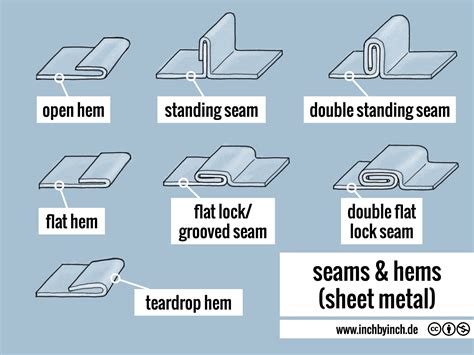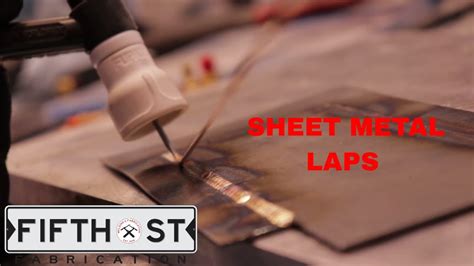different types of sheet metal joints To determine the best weld for a joint, we’ll evaluate the length of the seam that needs to be welded as well as the material type and thickness. If you call out a particular weld joint type and welding method, we’ll do our best . Yellow box junctions can often catch motorists out and result in hefty fines. Most yellow box junctions are found in cities with enforcement cameras automatically processing penalties. RAC research reveals that 8 in .
0 · types of sheet metal seams
1 · sheet metal overlap joint
2 · sheet metal joints pdf
3 · sheet metal joints and seams
4 · sheet metal clinching joint
5 · interlocking sheet metal joints
6 · different types of metal joints
7 · different joining methods for metal
Rating: 50-Amp 125/250V 3 Pole 4 Wire, Power Inlet CS6375, Feed-Thru CS6369; cULus Listed, Type 3R Outdoor
There are five common types of sheet metal joints that are extremely common across the industry, all with varying uses and advantages. The various joints in metal sheets are lap joint, Seam Joint, standing seam joint, grooved seam joint, corner joint, and double corner seam joint. How are sheet metals joined together? Sheet metal is joined together .
Sheet metal joining refers to the process of connecting different sheet metal parts through specific techniques during sheet metal fabrication, aiming to achieve the functionality and performance of the overall structure. There are five major welding joint types: butt joint, tee joint, corner joint, lap joint and edge joint. Butt joints are the most common and can be made in various ways depending on factors like groove shape and width. To determine the best weld for a joint, we’ll evaluate the length of the seam that needs to be welded as well as the material type and thickness. If you call out a particular weld joint type and welding method, we’ll do our best .
We’ll cover the following welding joint types in this guide: Butt Joint: A basic welding joint used when joining two pieces of metal edge-to-edge. Corner Joint: A joint employed when joining two pieces of metal at a 90 . Today we will try to add some new and/or improved knowledge to your brain bank by investigating together with the 5 most commonly utilized welding joints in an easy-to-read text. This joint is simple in preparation and . Learn how sheet metal joints are made and used in the HVAC sheet metal industry to make air conditioning ductwork.
There are five common types of sheet metal joints that are extremely common across the industry, all with varying uses and advantages.Sheet metal joining operation is crucial part of the sheet metal fabrication process. Joint reliability depends on its type, sheet metal material, and manufacturing process. This article covers various types of sheet metal joining techniques, their advantages, disadvantages, and applications. Discover the 7 most common sheet metal joint techniques that include riveted, welded, and adhesive joint types for appropriate enhancement of structural rigidity and effectiveness in your projects.
The various joints in metal sheets are lap joint, Seam Joint, standing seam joint, grooved seam joint, corner joint, and double corner seam joint. How are sheet metals joined together? Sheet metal is joined together through welding, riveting, adhesive bonding, or using mechanical fasteners.

types of sheet metal seams
Sheet metal joining refers to the process of connecting different sheet metal parts through specific techniques during sheet metal fabrication, aiming to achieve the functionality and performance of the overall structure. There are five major welding joint types: butt joint, tee joint, corner joint, lap joint and edge joint. Butt joints are the most common and can be made in various ways depending on factors like groove shape and width. To determine the best weld for a joint, we’ll evaluate the length of the seam that needs to be welded as well as the material type and thickness. If you call out a particular weld joint type and welding method, we’ll do our best to defer to your preference. We’ll cover the following welding joint types in this guide: Butt Joint: A basic welding joint used when joining two pieces of metal edge-to-edge. Corner Joint: A joint employed when joining two pieces of metal at a 90-degree angle, forming a corner.
Today we will try to add some new and/or improved knowledge to your brain bank by investigating together with the 5 most commonly utilized welding joints in an easy-to-read text. This joint is simple in preparation and when welded correctly, it is unbelievably strong. Learn how sheet metal joints are made and used in the HVAC sheet metal industry to make air conditioning ductwork.
There are five common types of sheet metal joints that are extremely common across the industry, all with varying uses and advantages.
Sheet metal joining operation is crucial part of the sheet metal fabrication process. Joint reliability depends on its type, sheet metal material, and manufacturing process. This article covers various types of sheet metal joining techniques, their advantages, disadvantages, and applications. Discover the 7 most common sheet metal joint techniques that include riveted, welded, and adhesive joint types for appropriate enhancement of structural rigidity and effectiveness in your projects. The various joints in metal sheets are lap joint, Seam Joint, standing seam joint, grooved seam joint, corner joint, and double corner seam joint. How are sheet metals joined together? Sheet metal is joined together through welding, riveting, adhesive bonding, or using mechanical fasteners. Sheet metal joining refers to the process of connecting different sheet metal parts through specific techniques during sheet metal fabrication, aiming to achieve the functionality and performance of the overall structure.
There are five major welding joint types: butt joint, tee joint, corner joint, lap joint and edge joint. Butt joints are the most common and can be made in various ways depending on factors like groove shape and width. To determine the best weld for a joint, we’ll evaluate the length of the seam that needs to be welded as well as the material type and thickness. If you call out a particular weld joint type and welding method, we’ll do our best to defer to your preference. We’ll cover the following welding joint types in this guide: Butt Joint: A basic welding joint used when joining two pieces of metal edge-to-edge. Corner Joint: A joint employed when joining two pieces of metal at a 90-degree angle, forming a corner.

sheet metal overlap joint
How to use the Yellow Box Junction. #DrivesafeBahamas
different types of sheet metal joints|sheet metal joints pdf